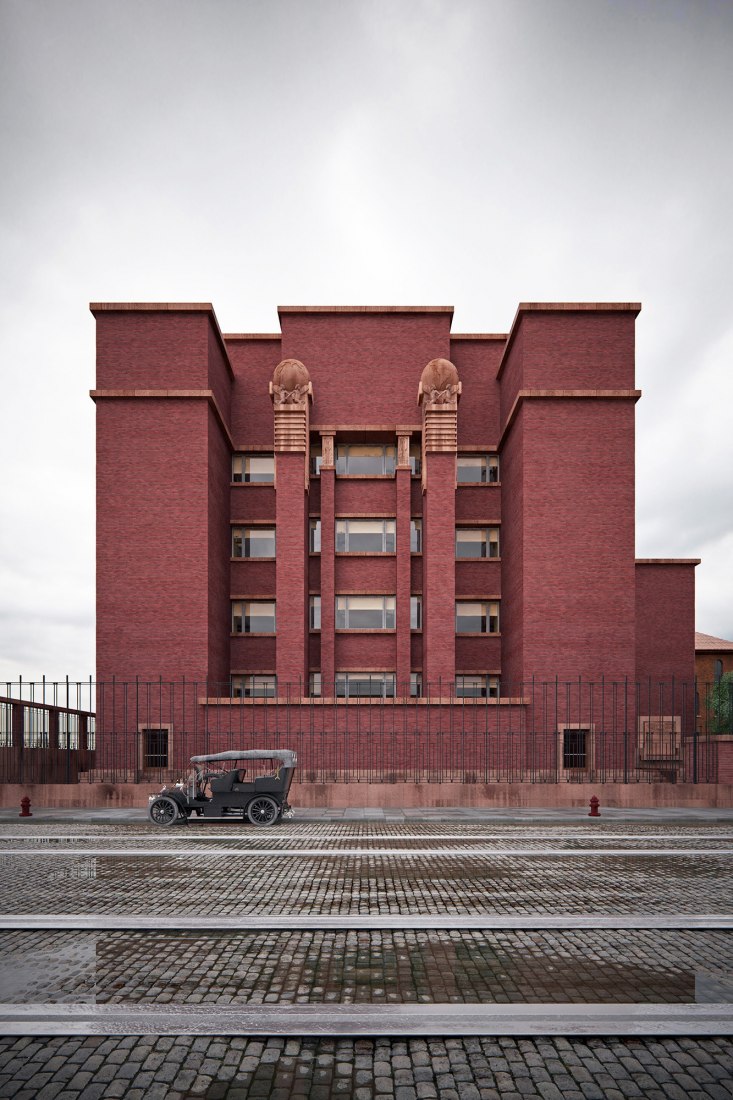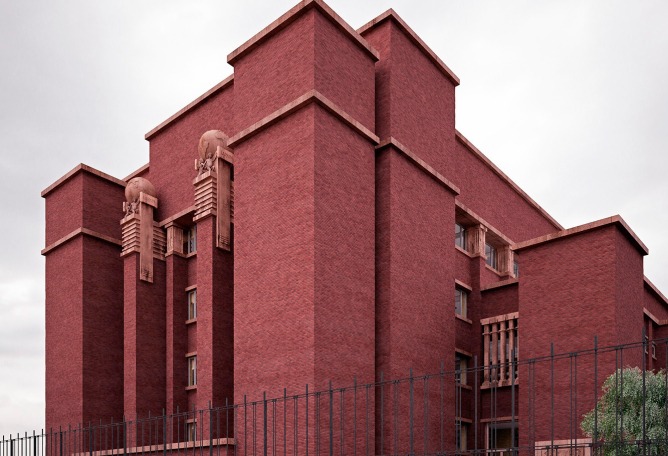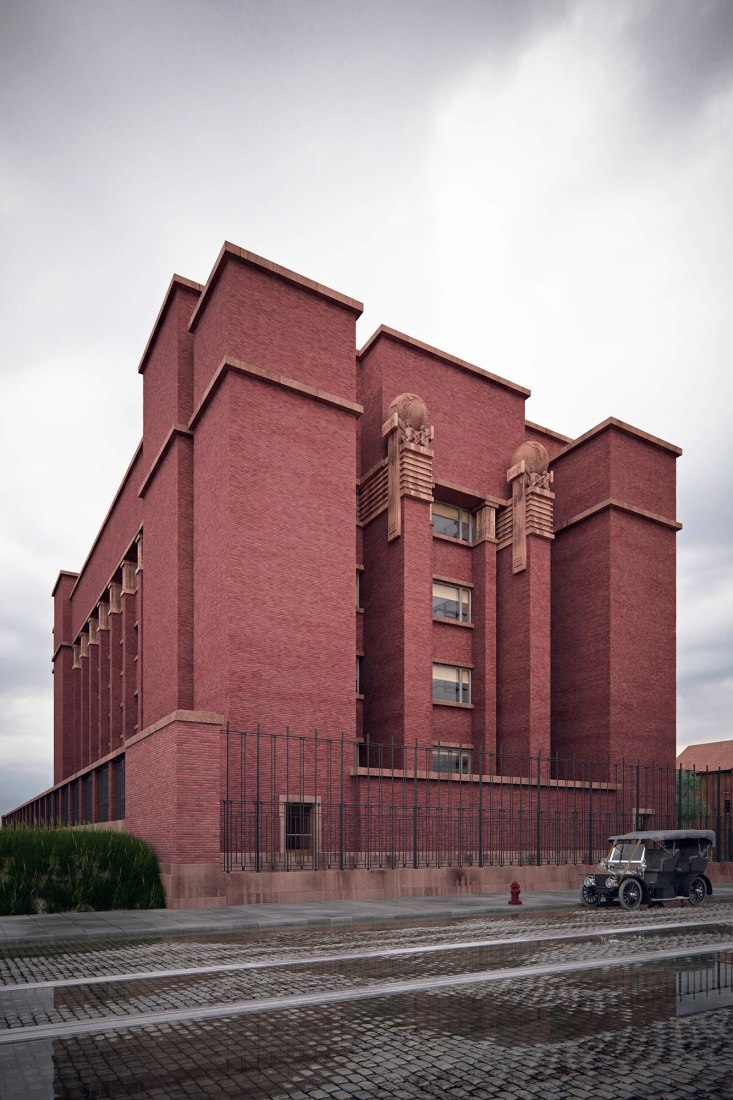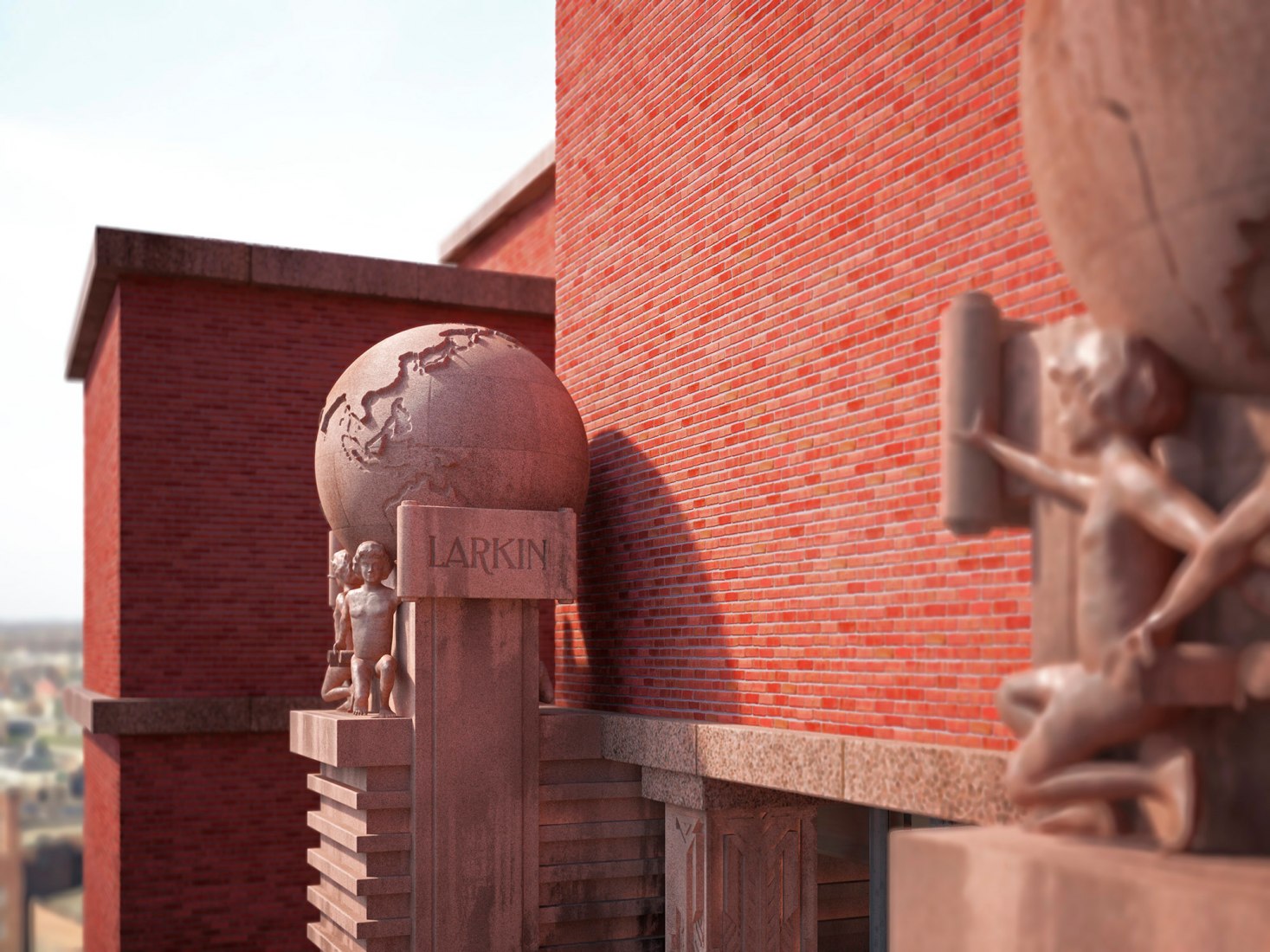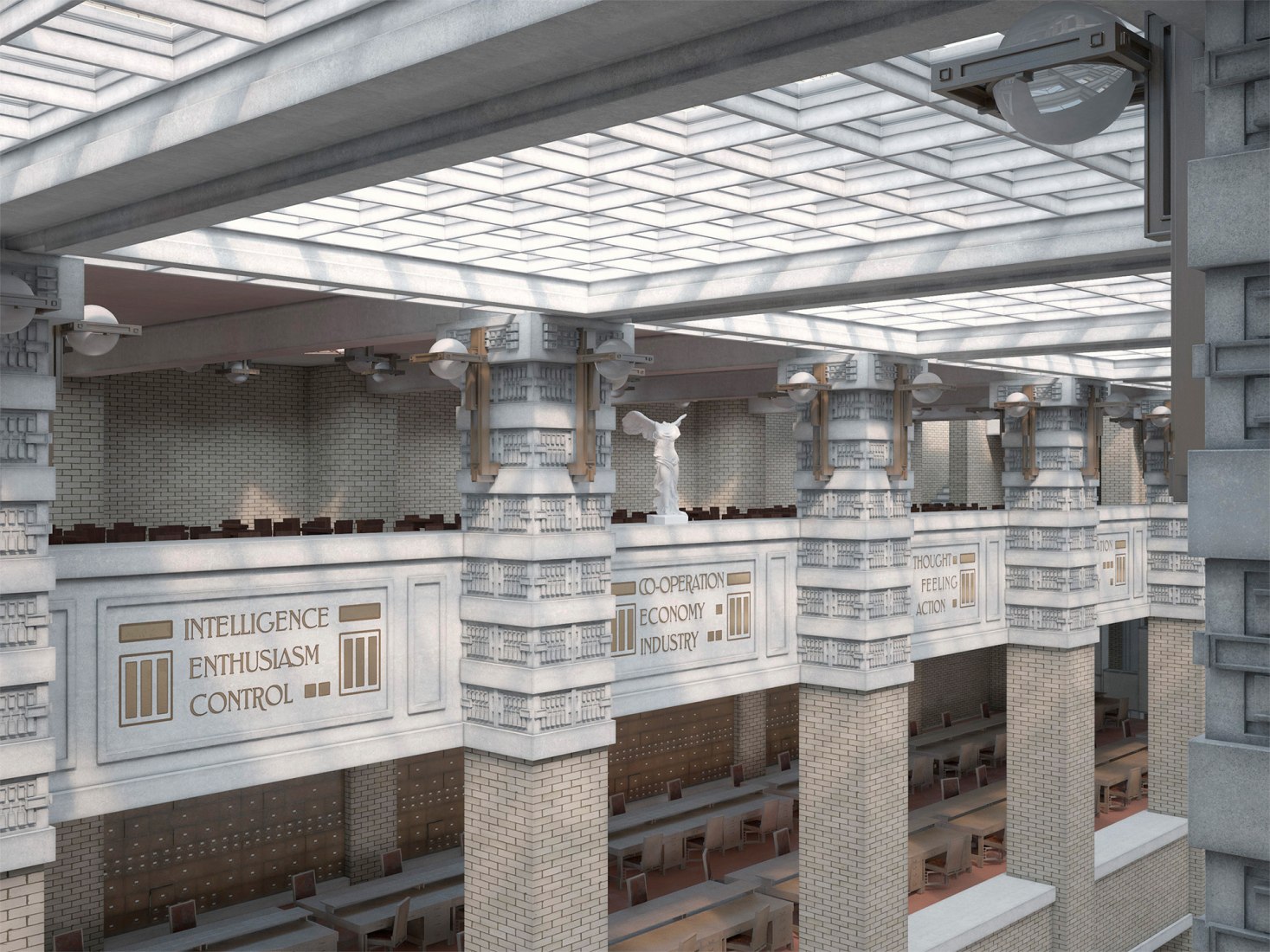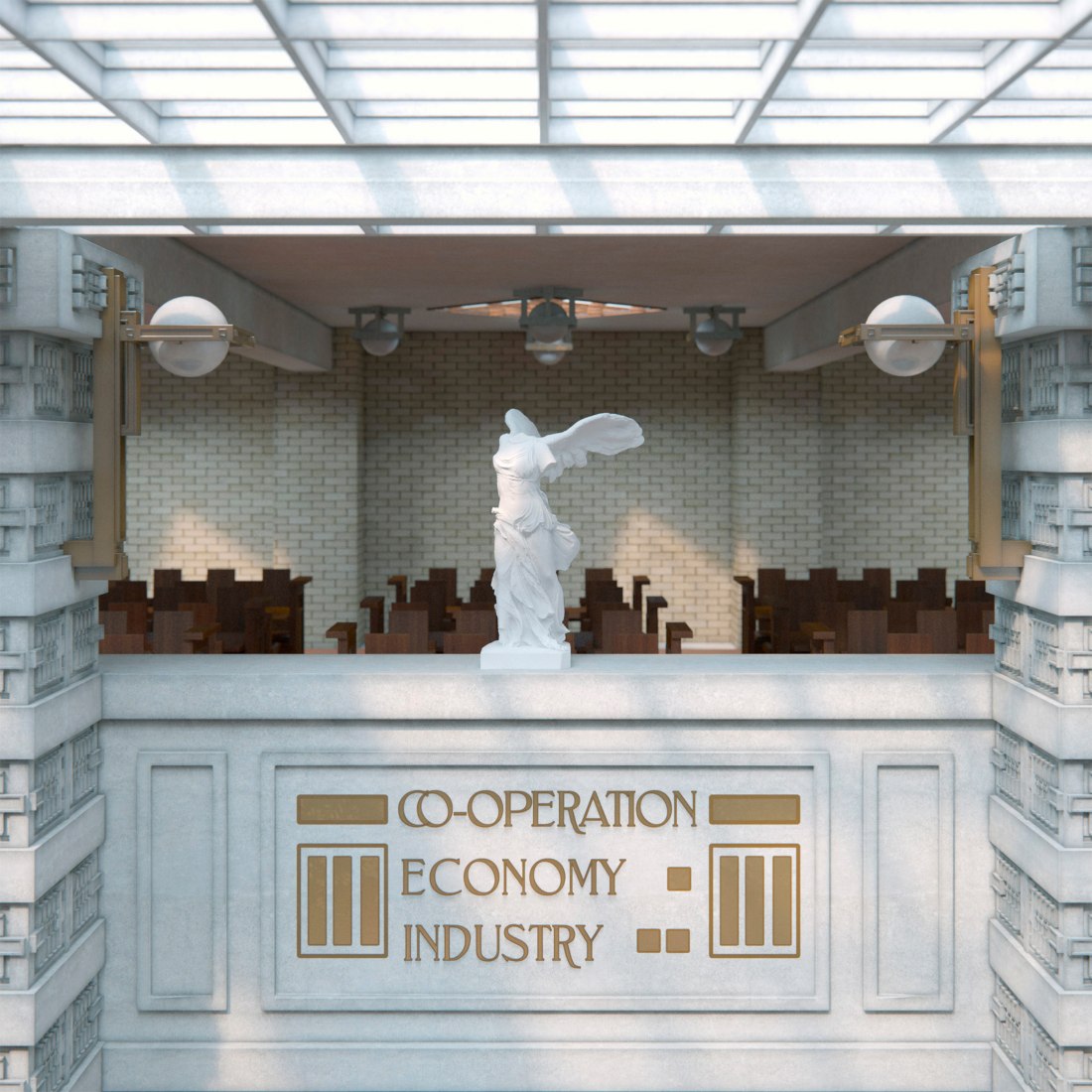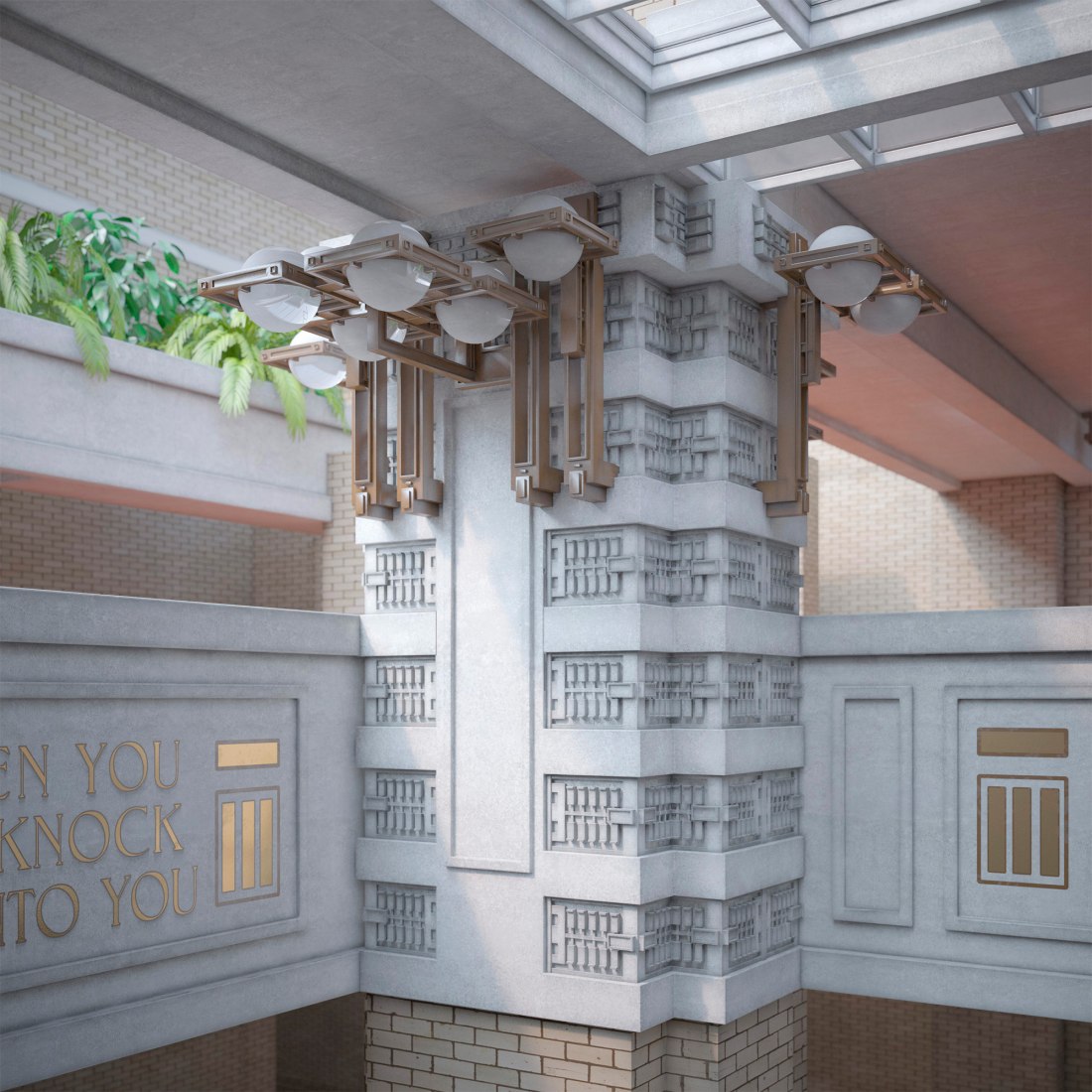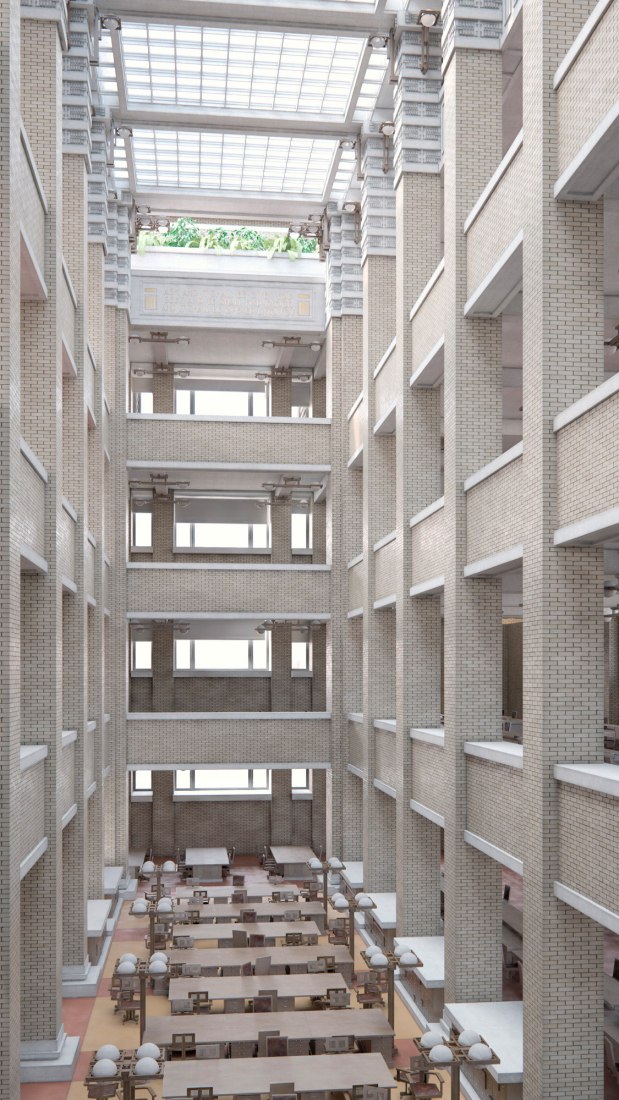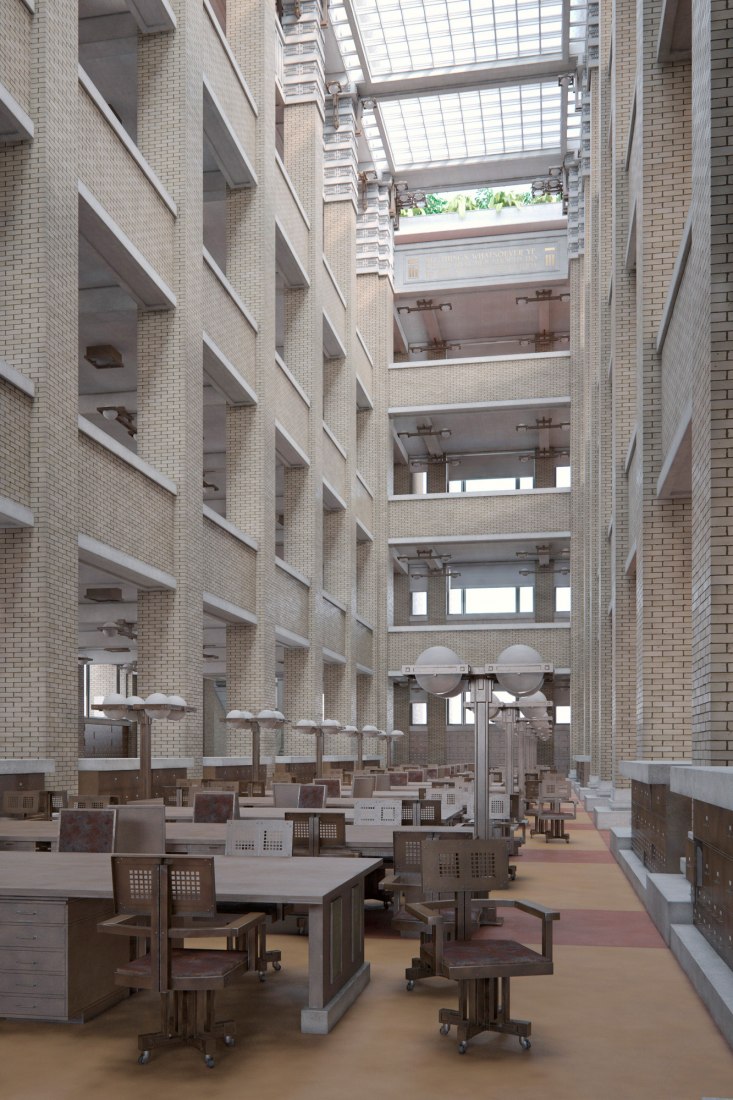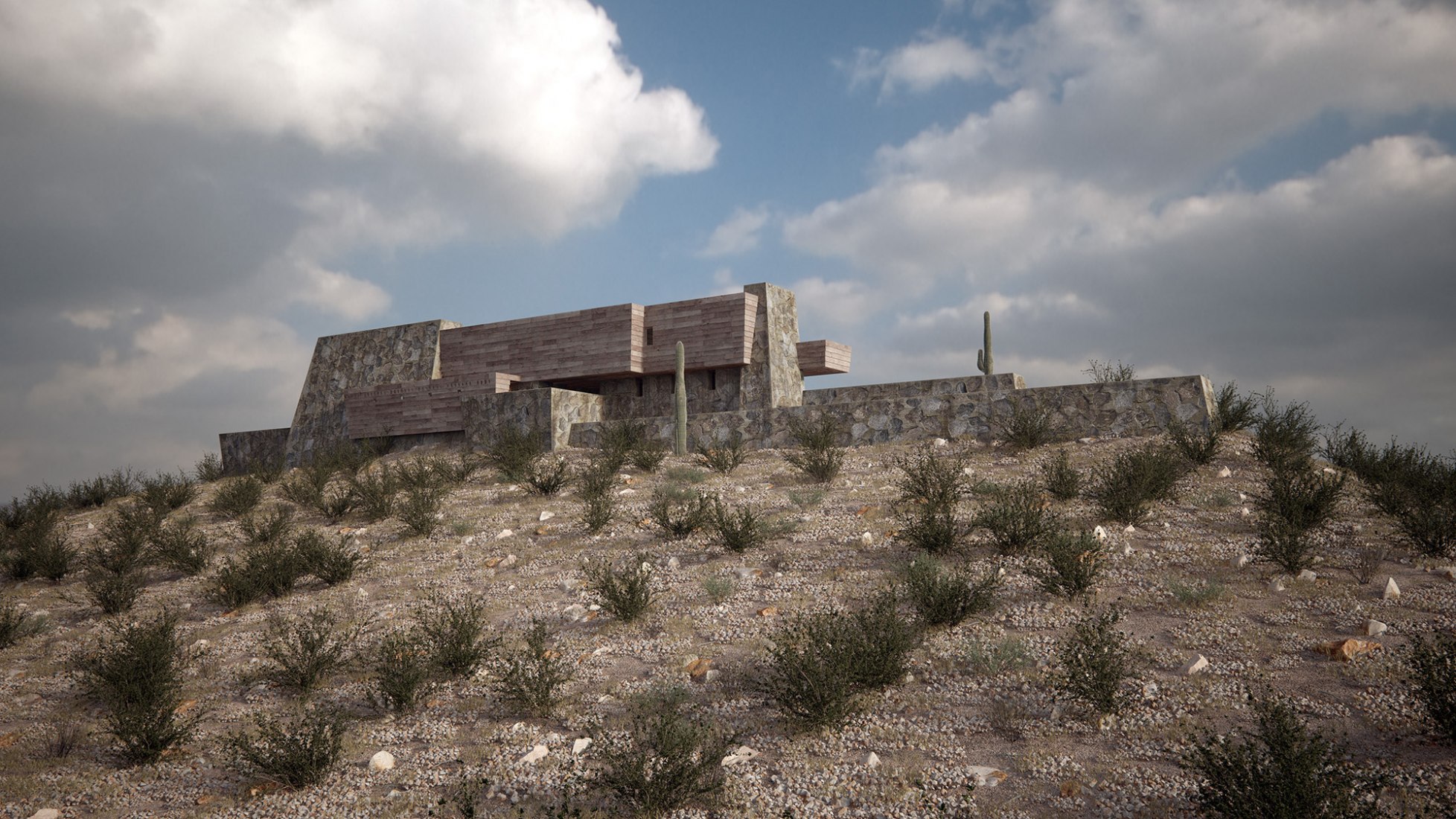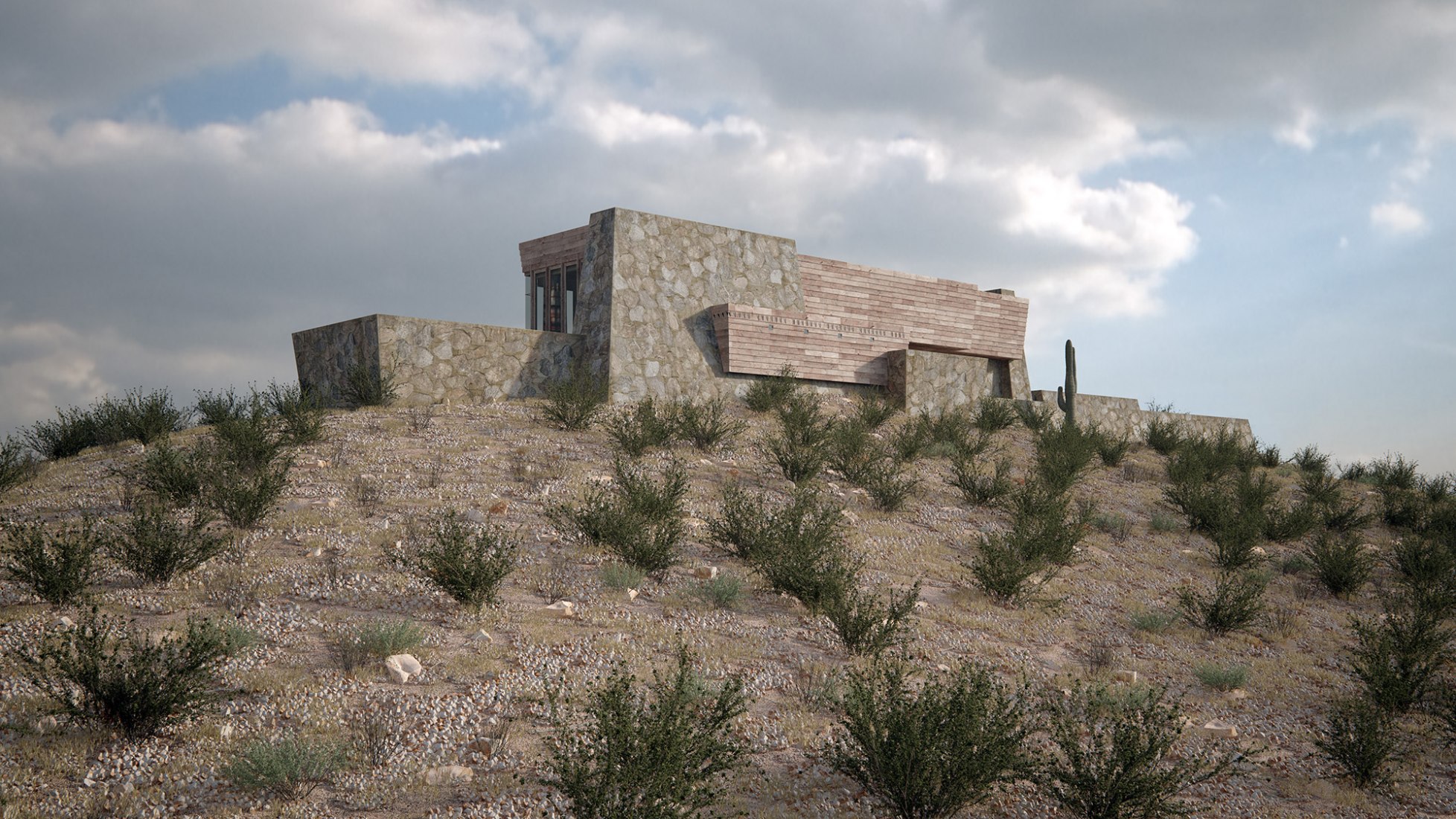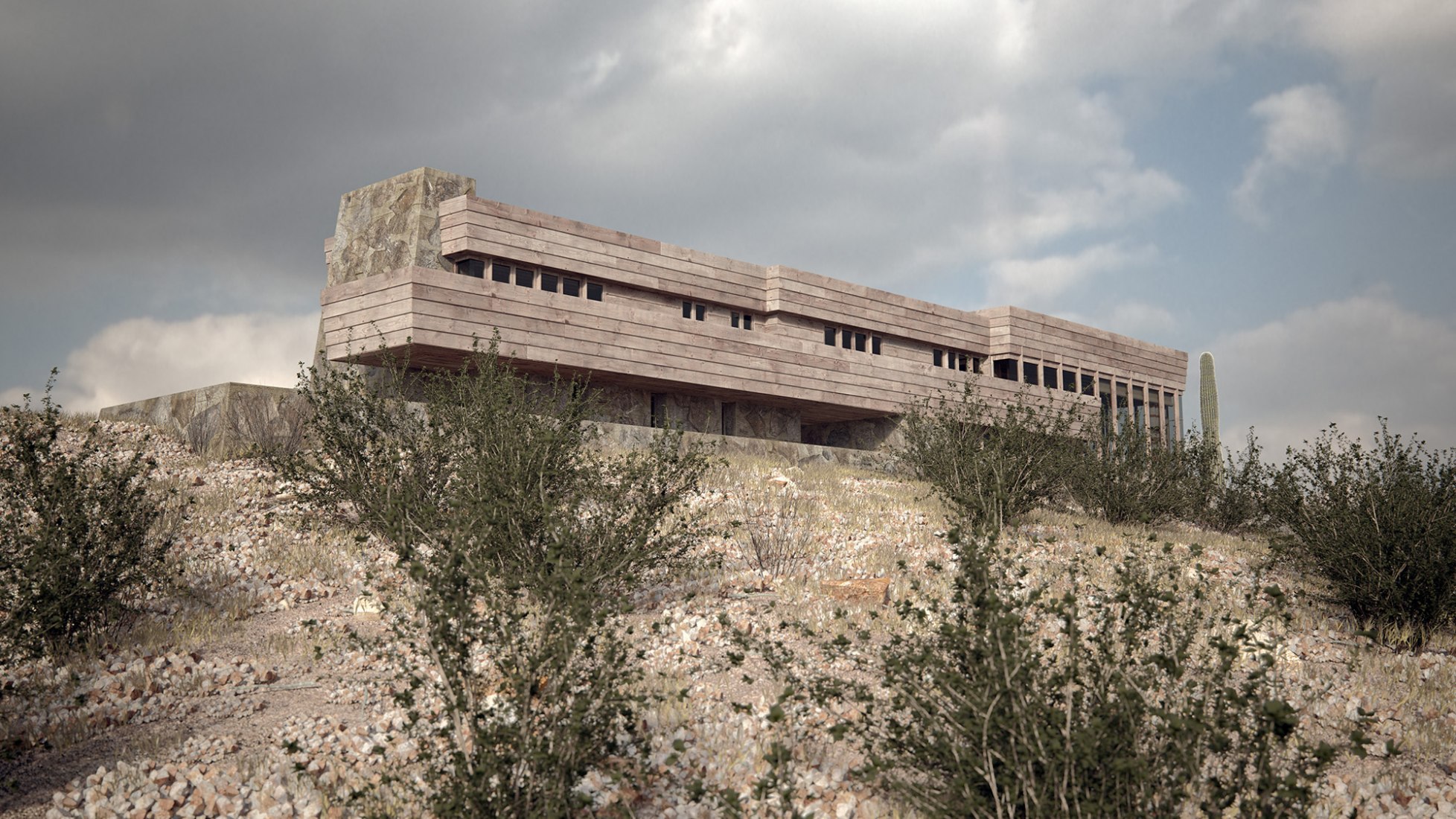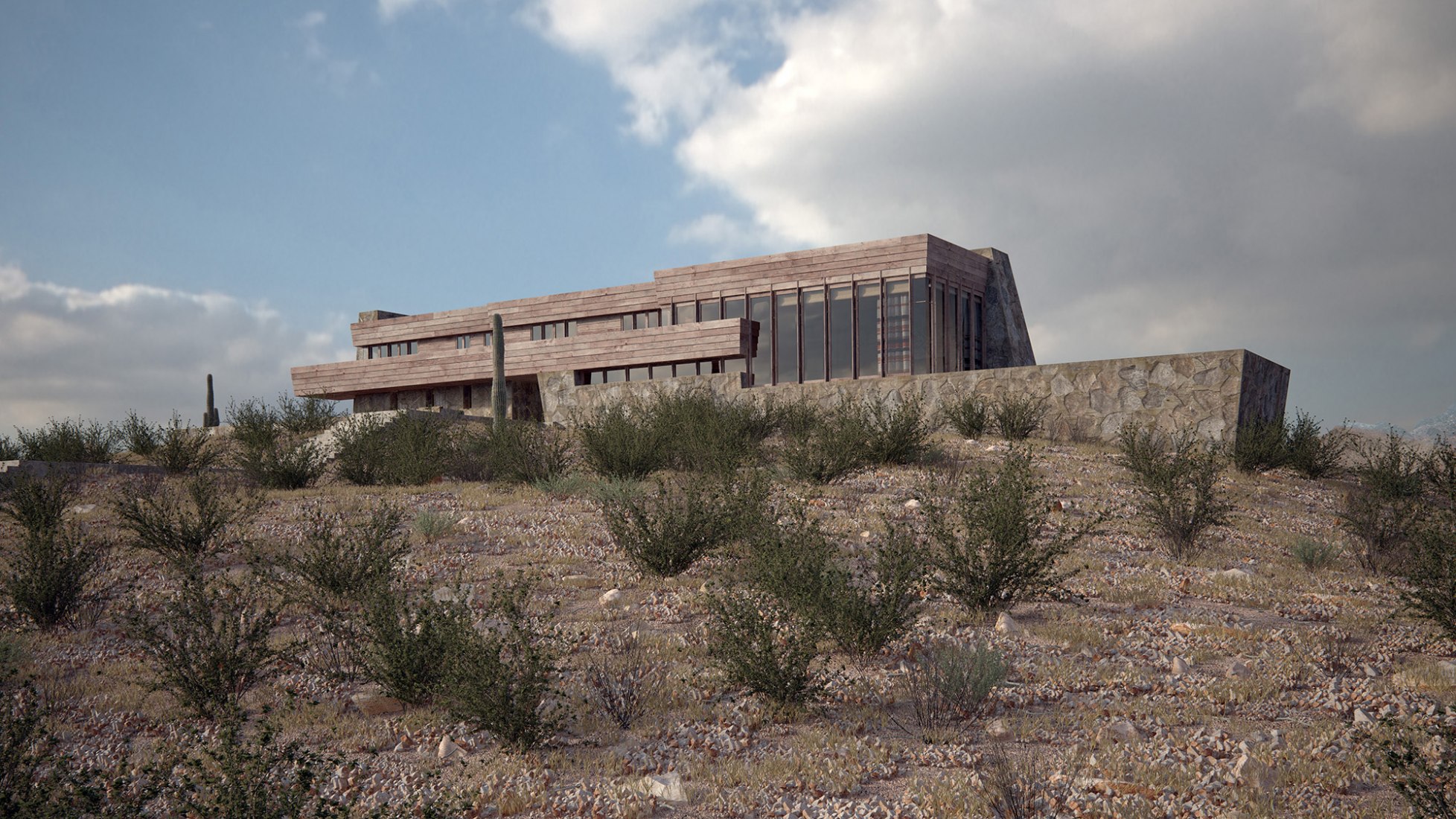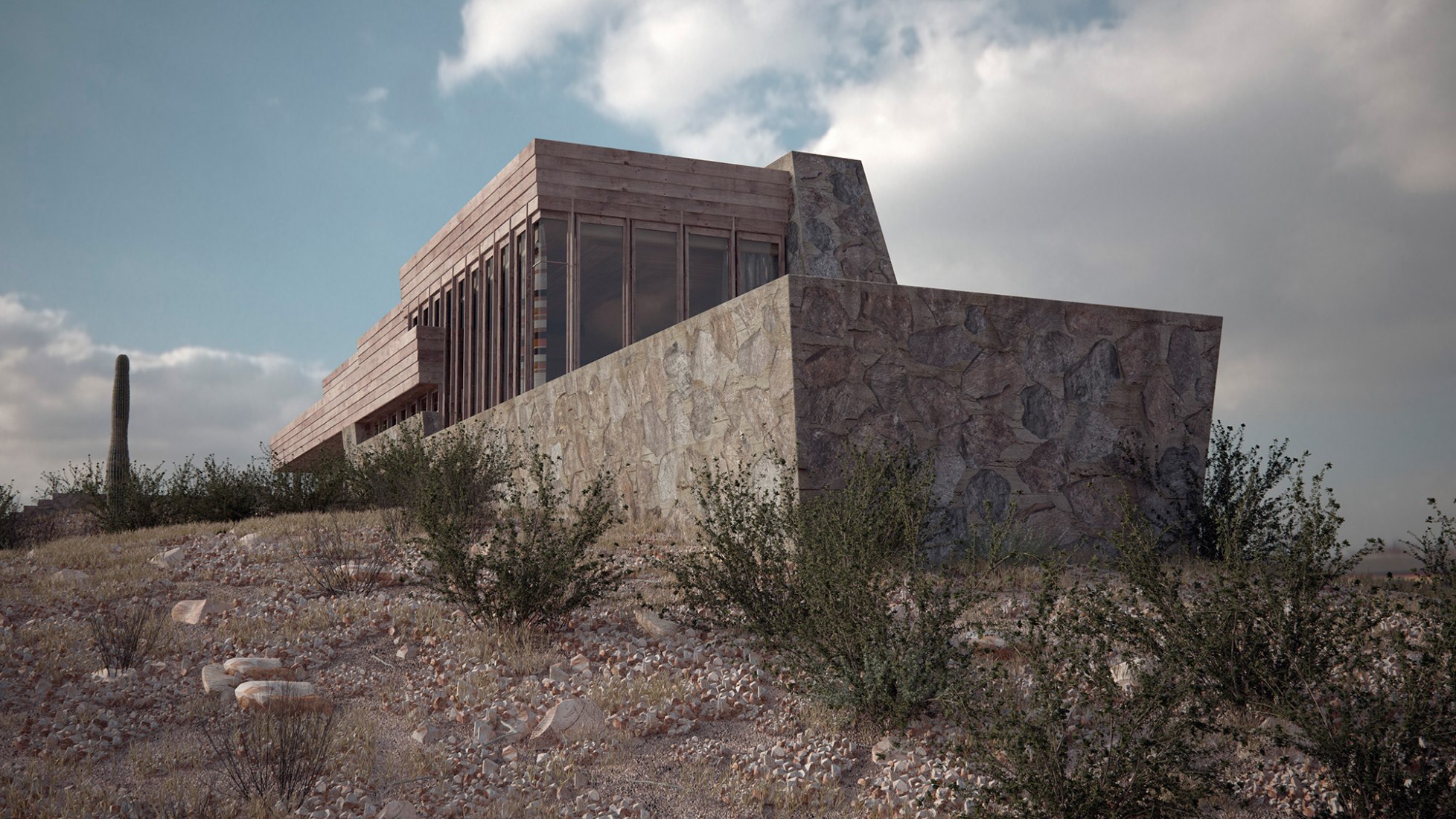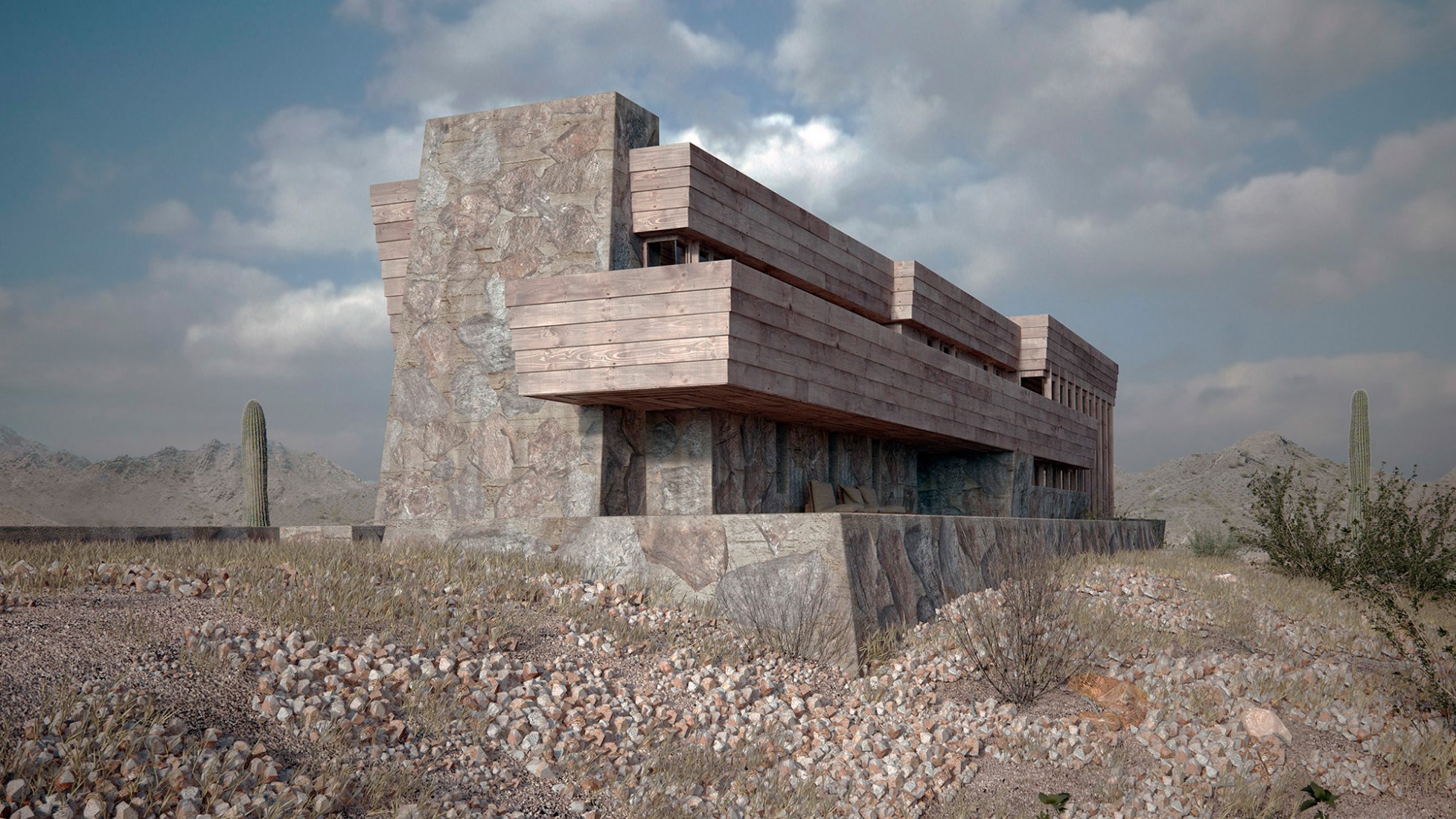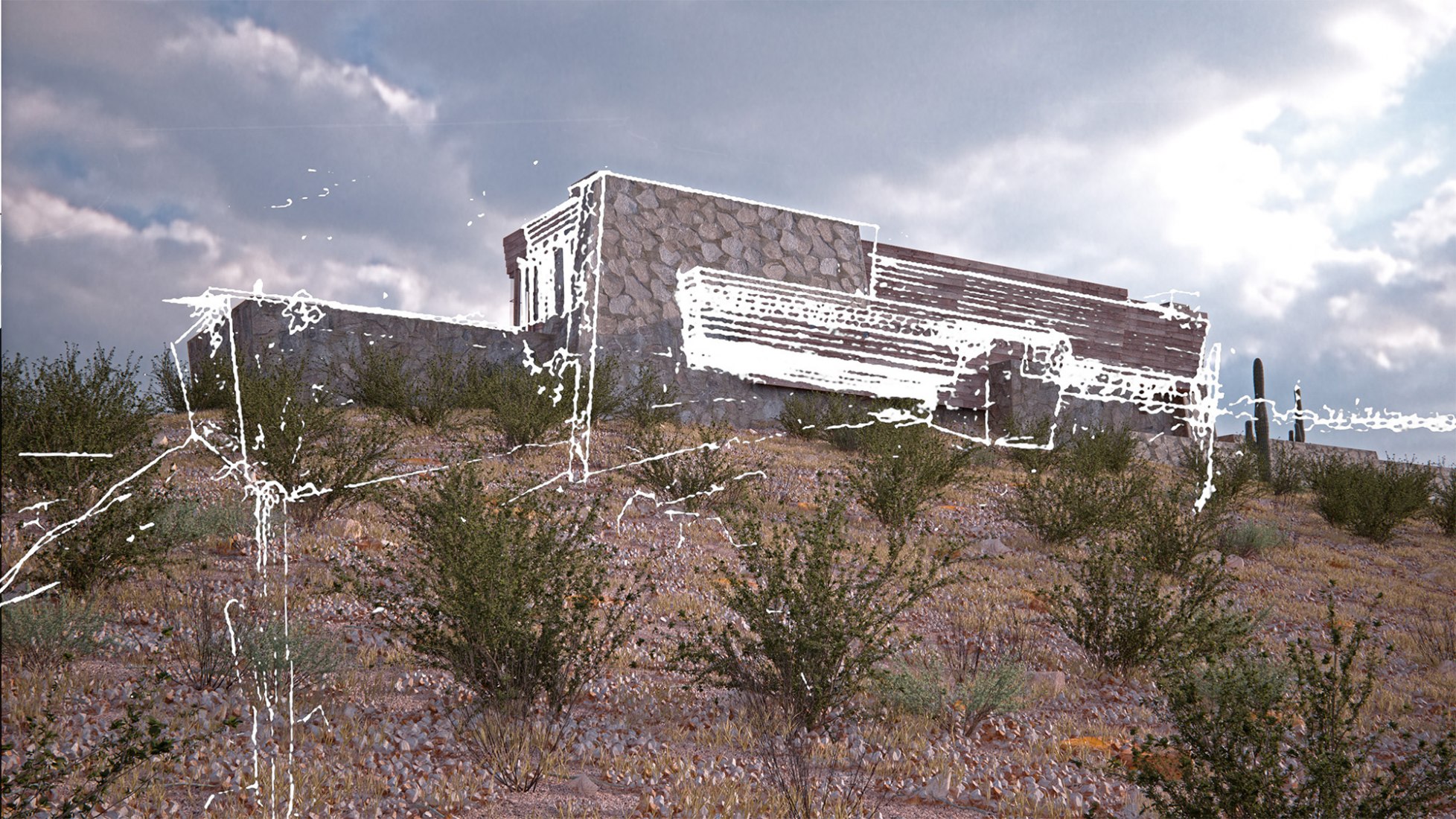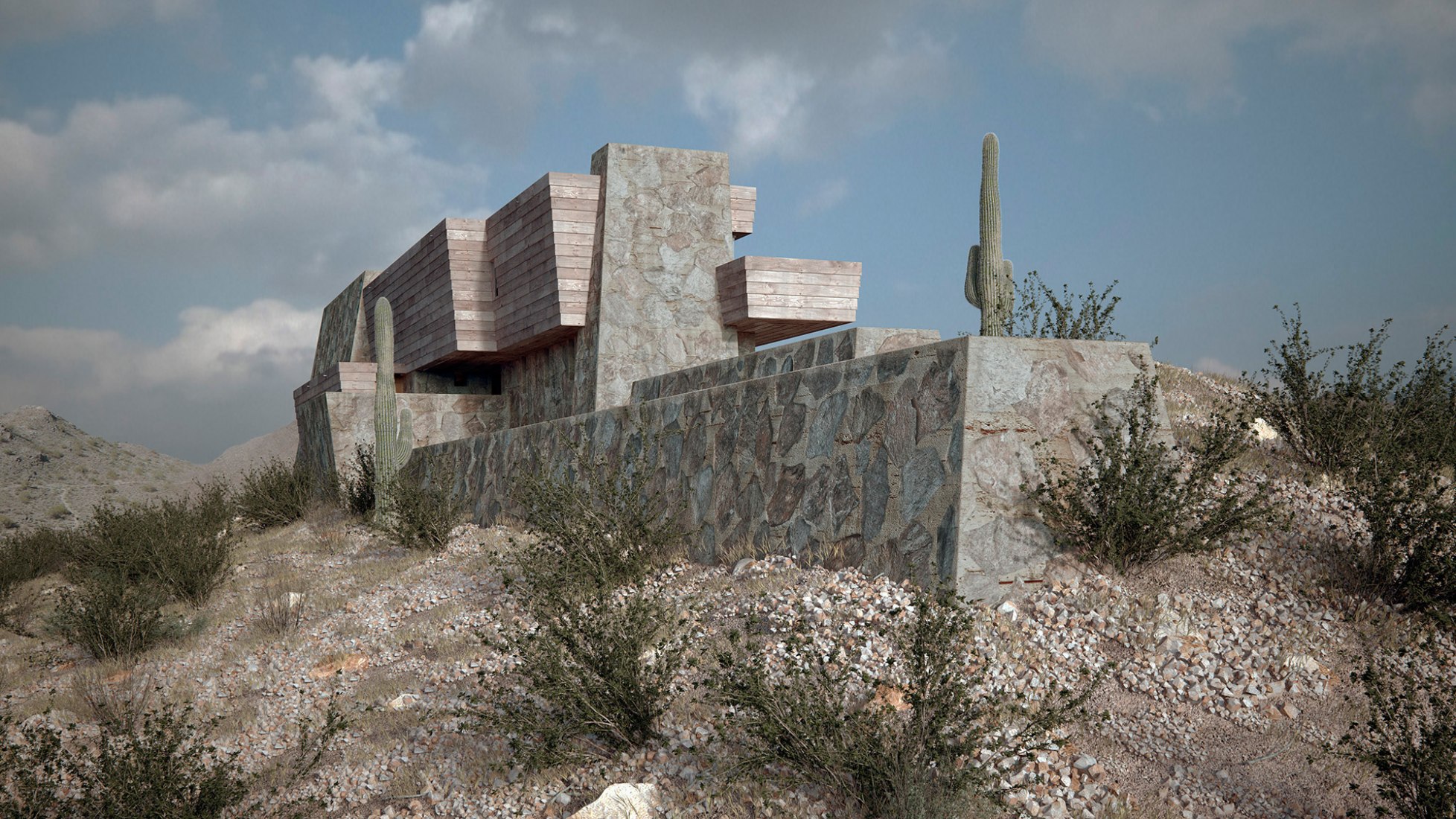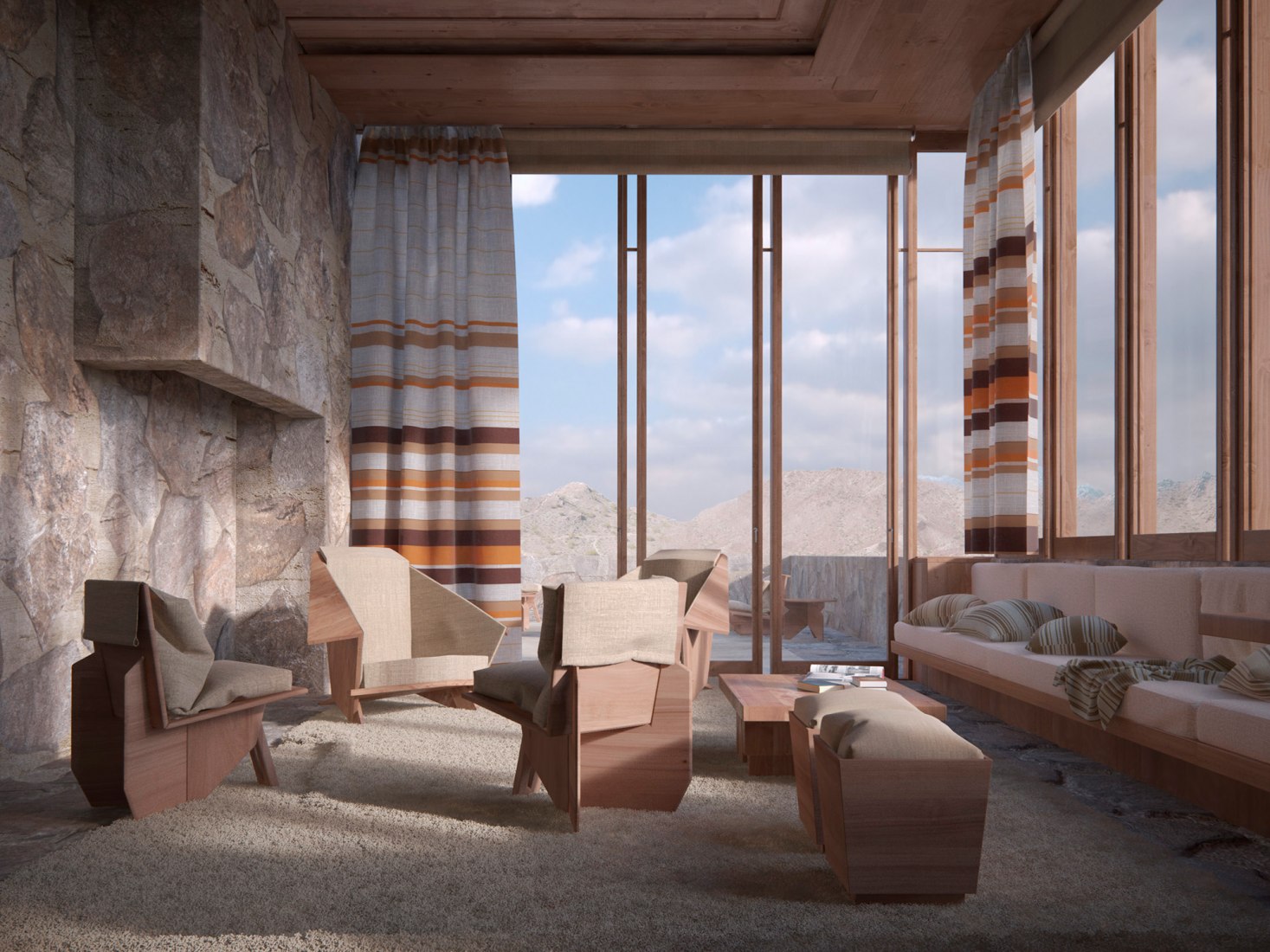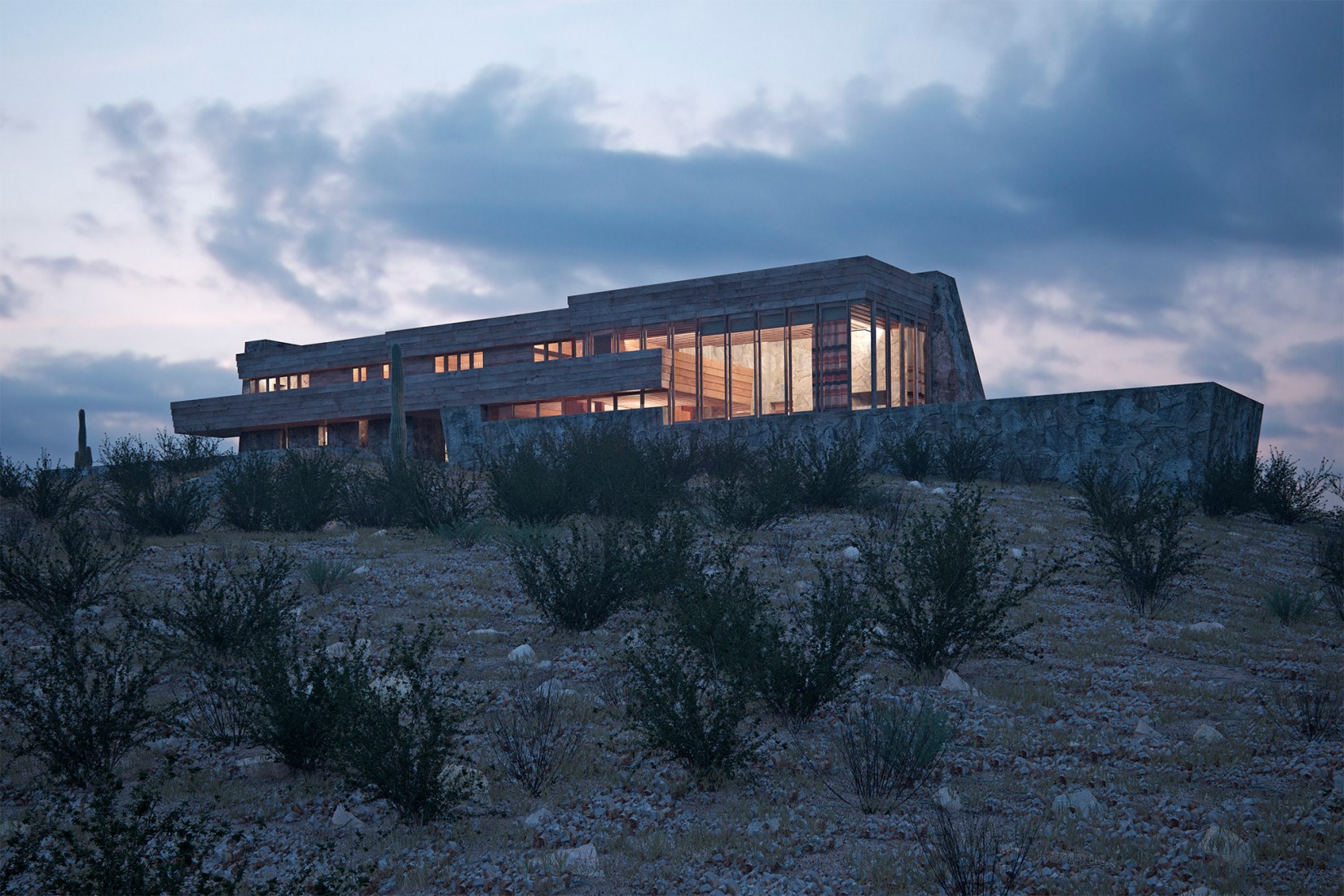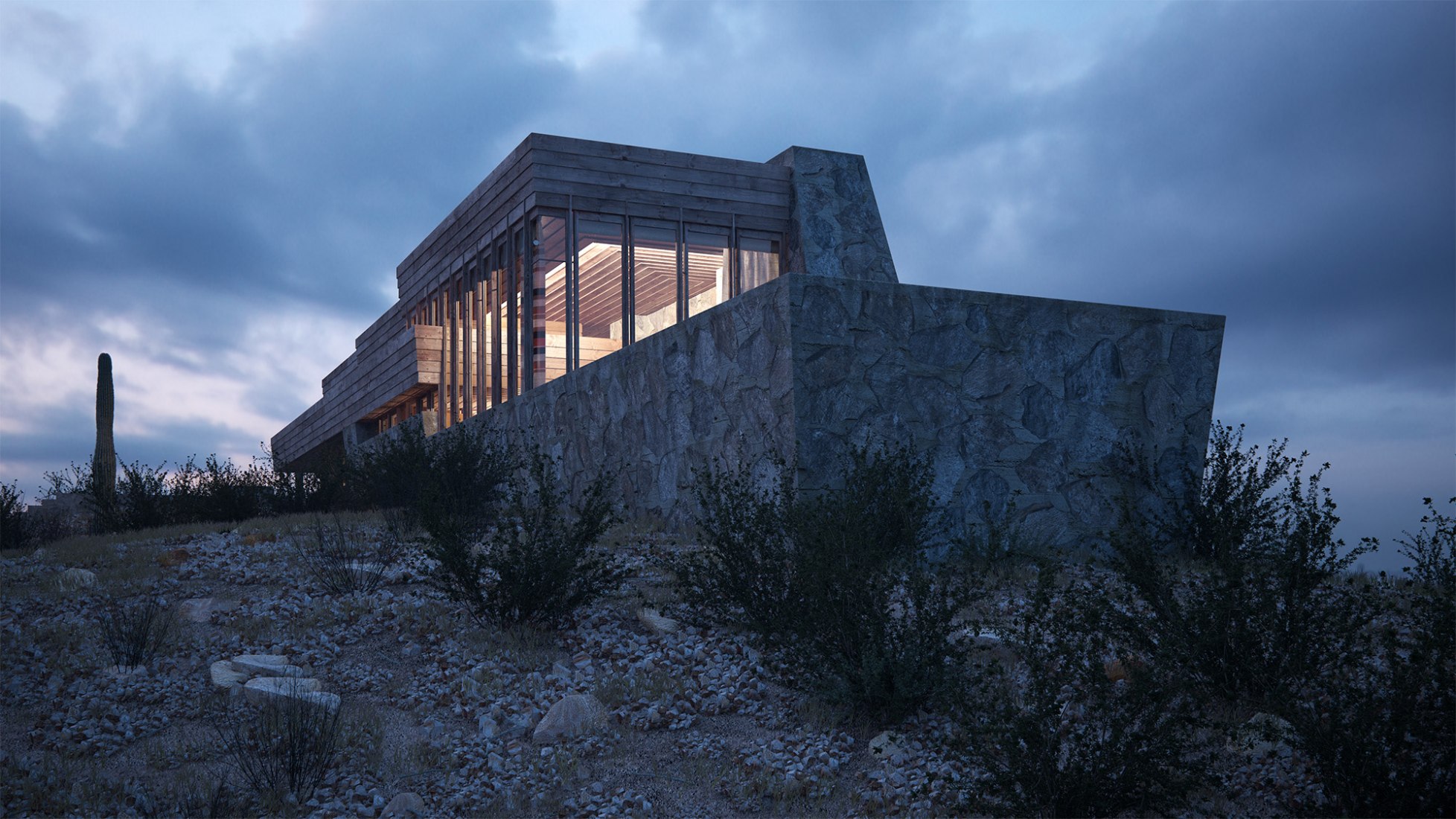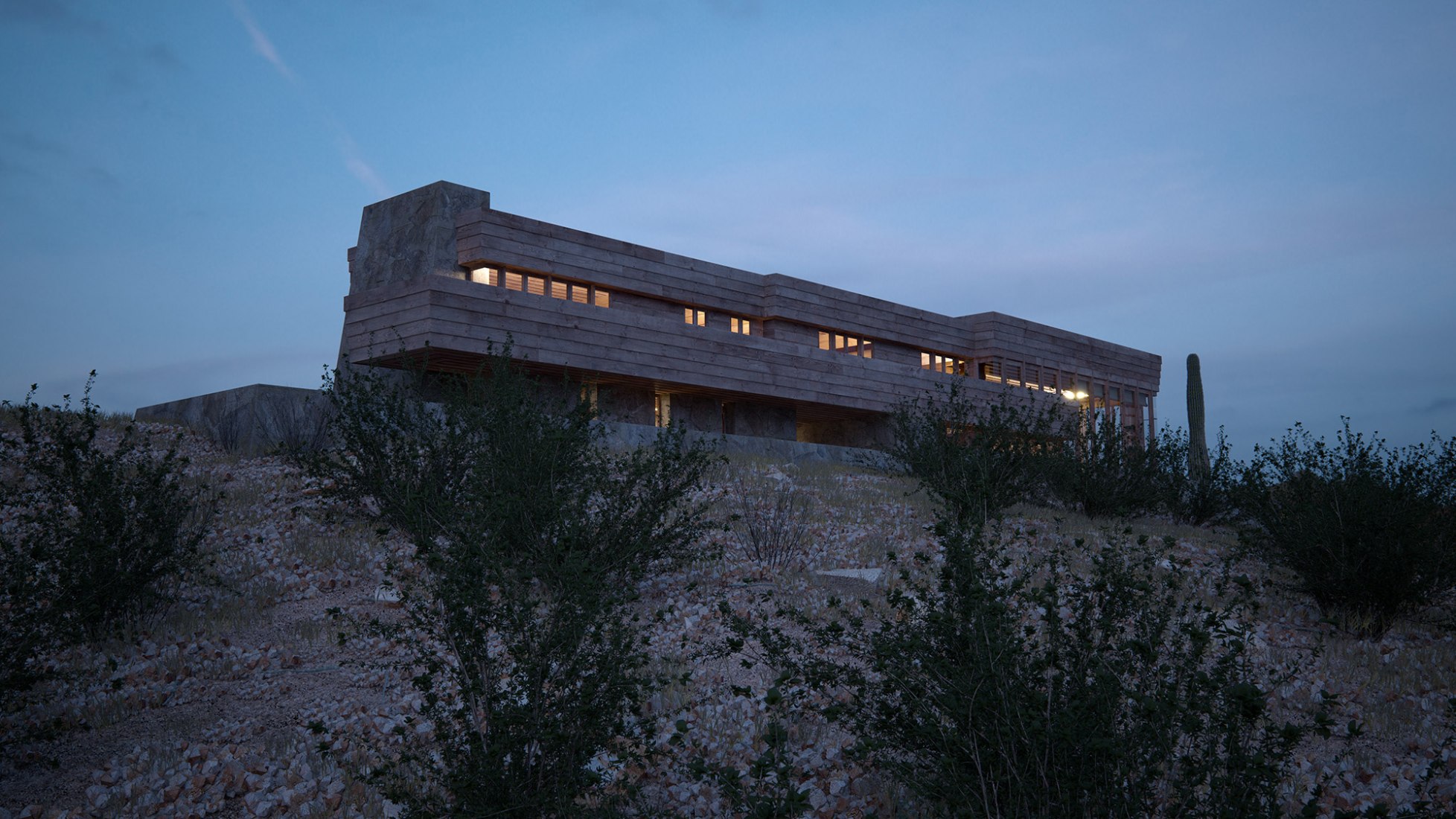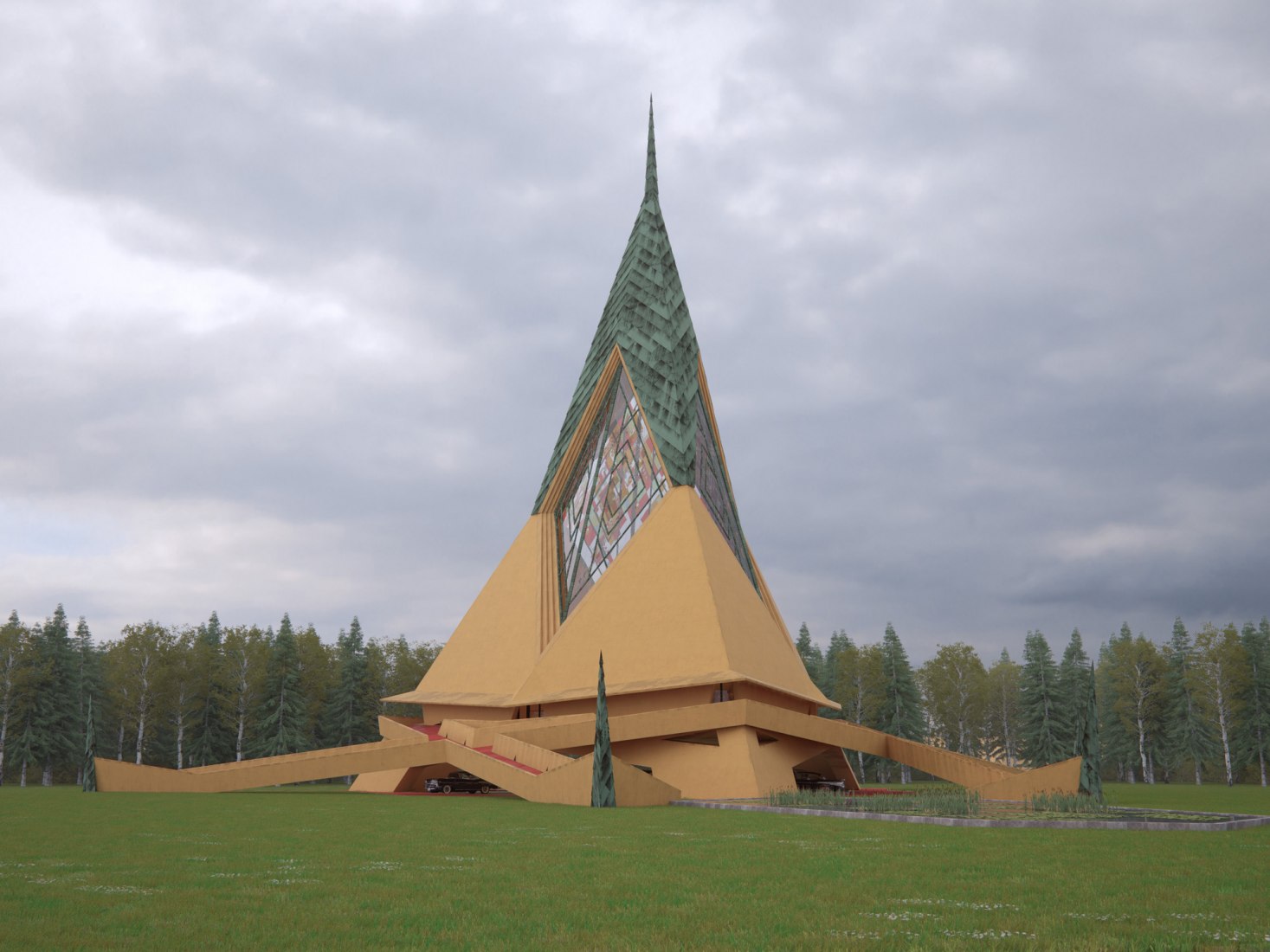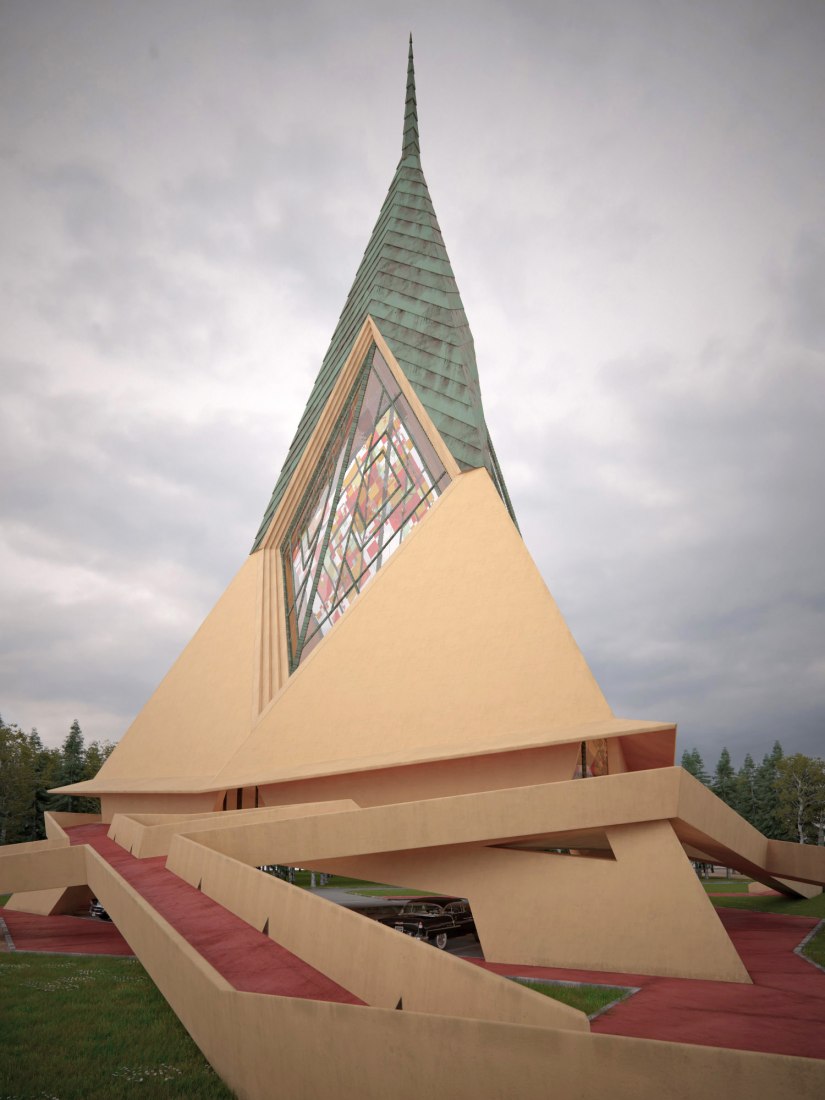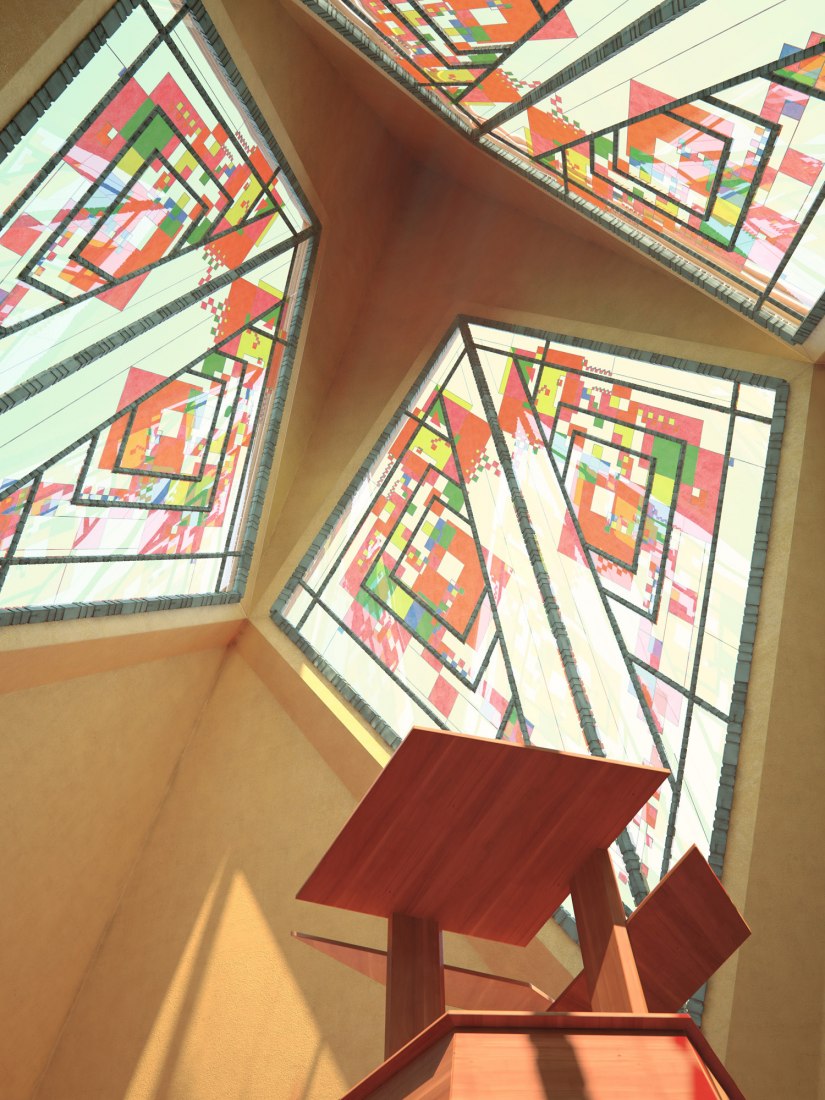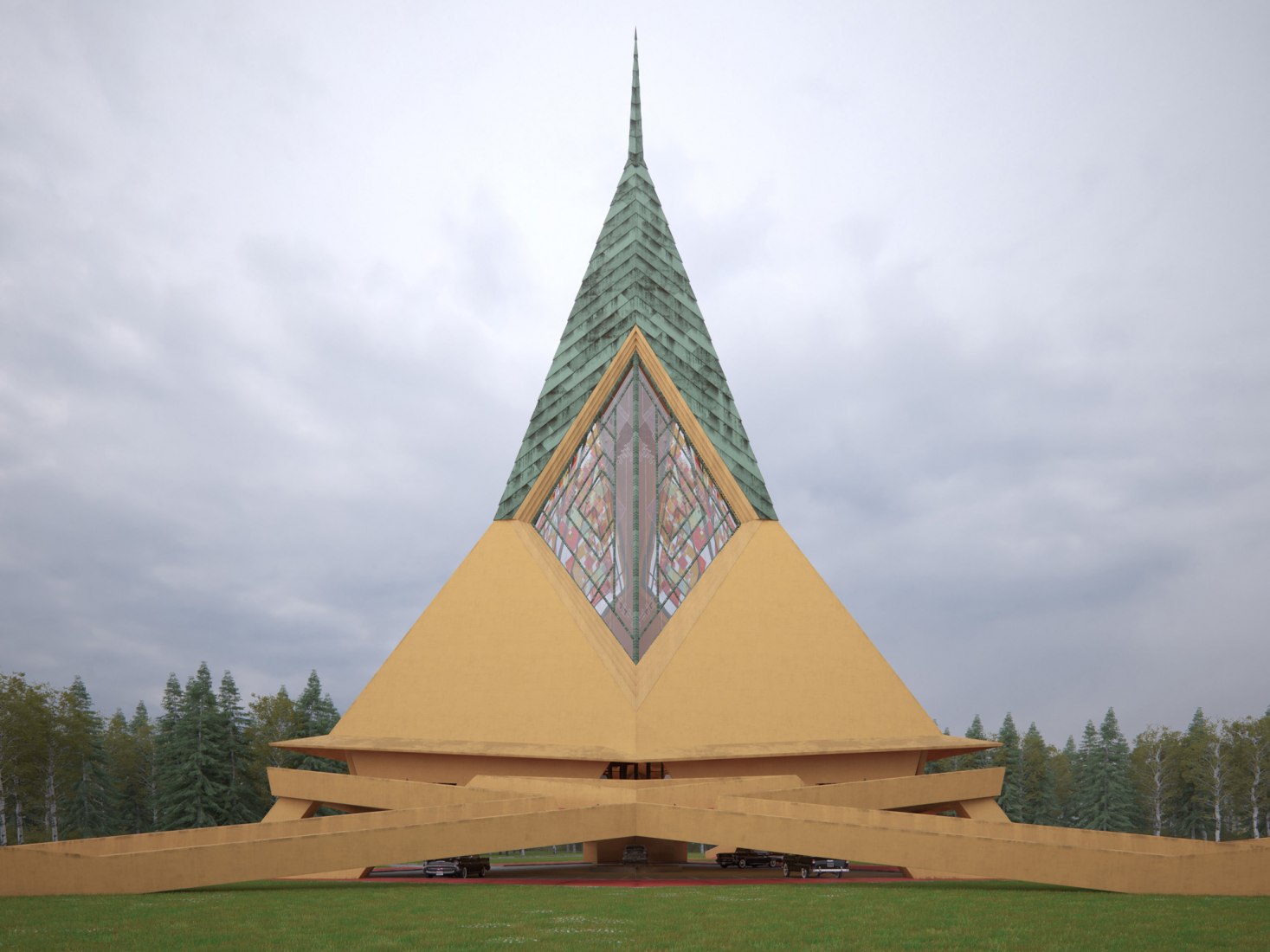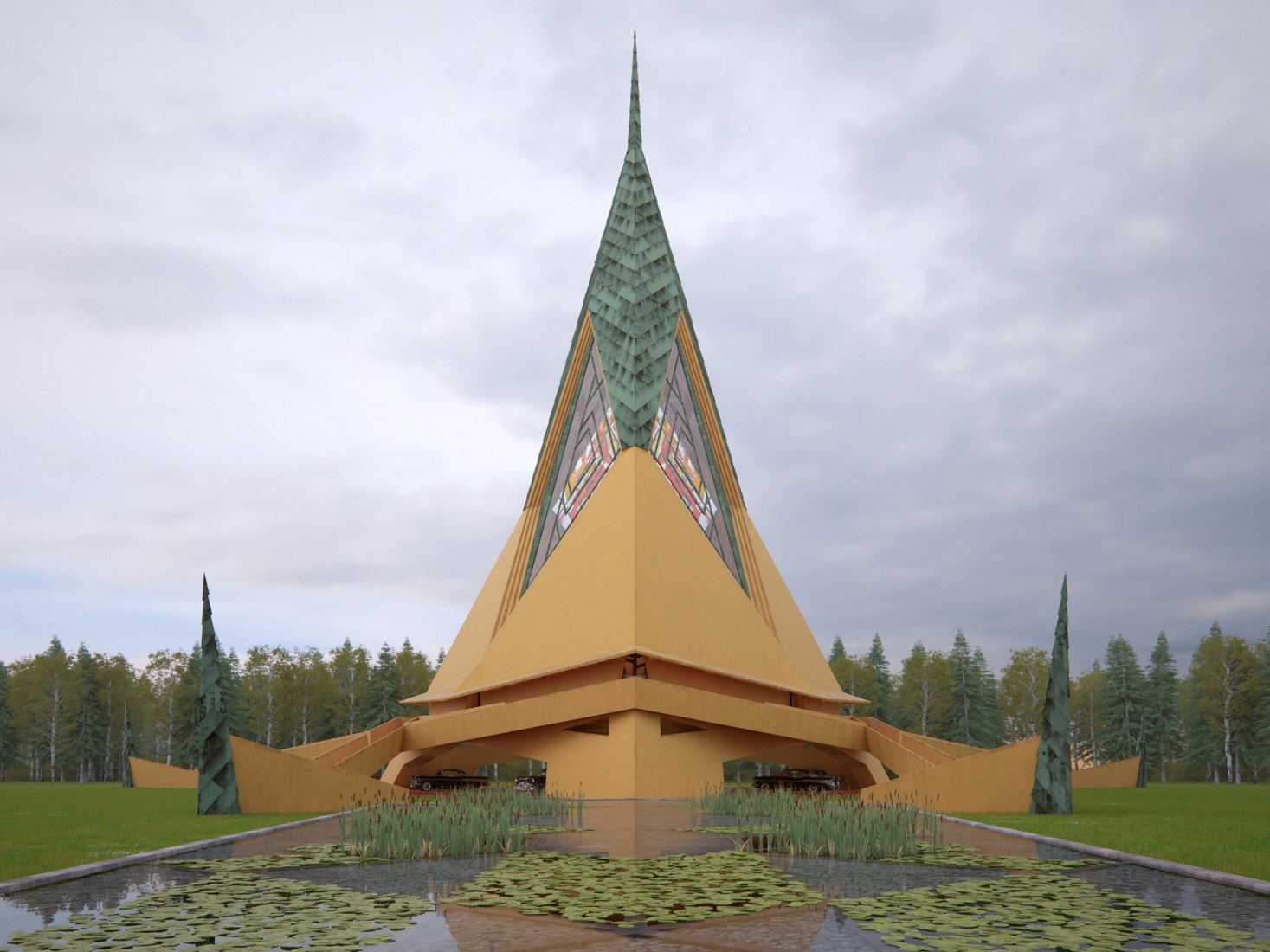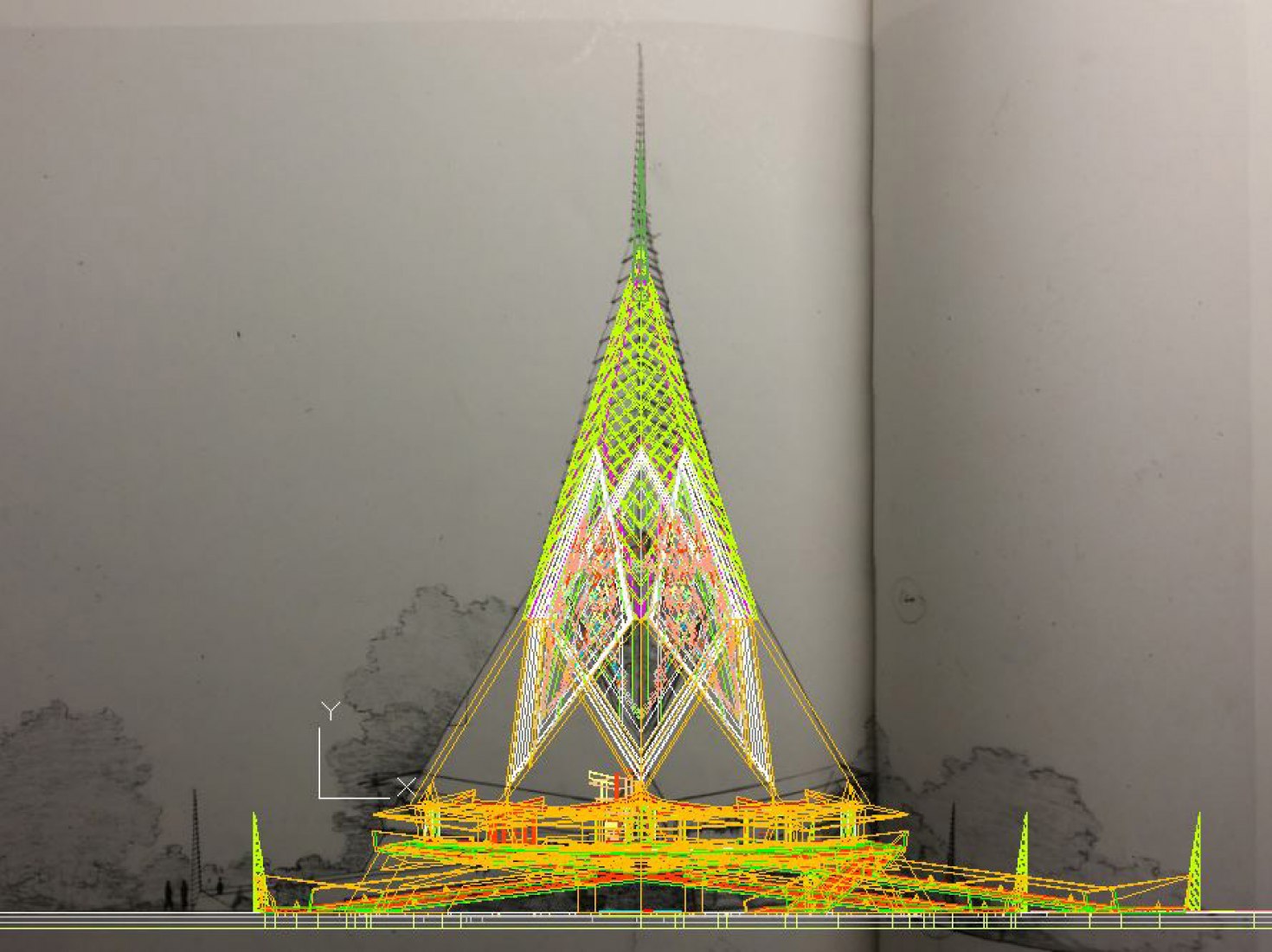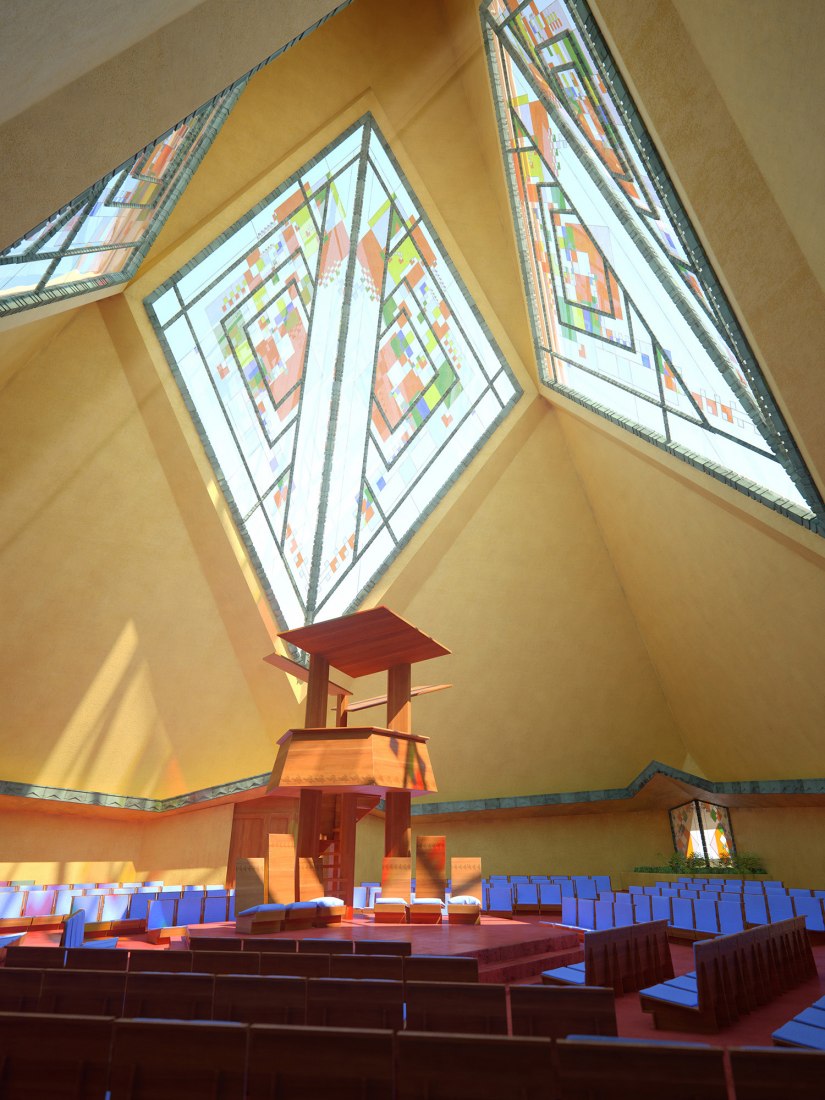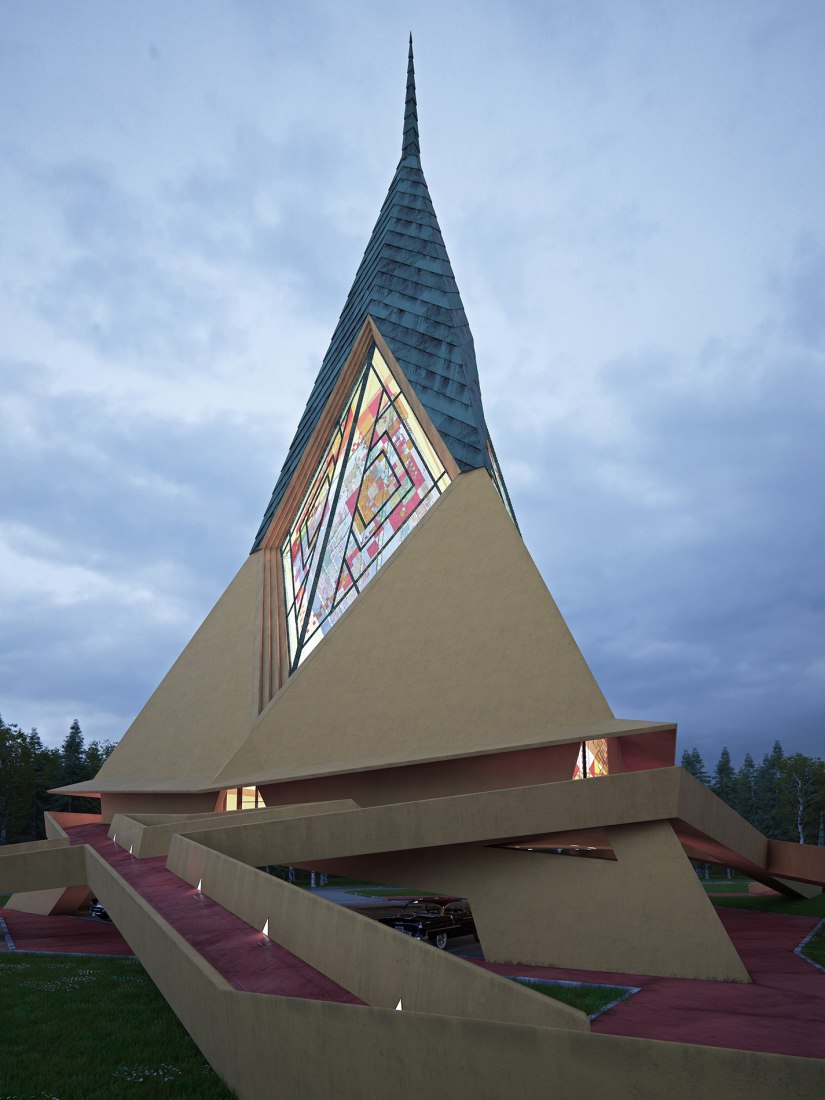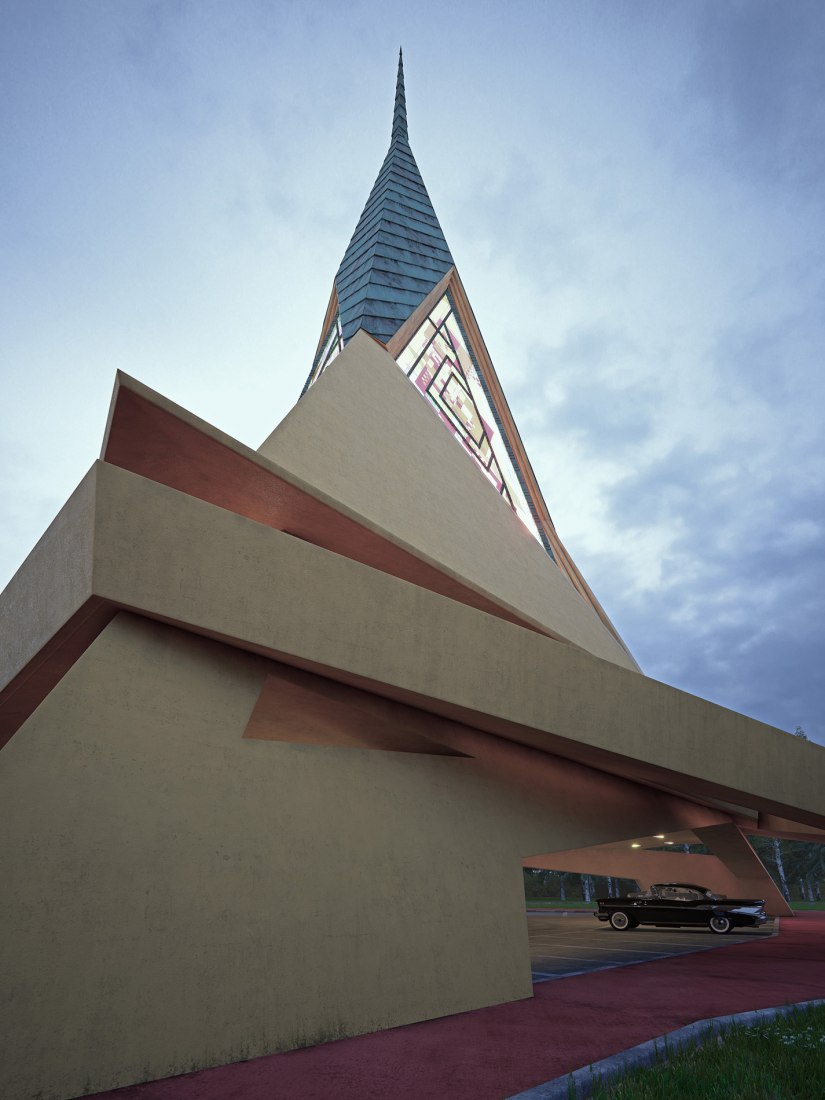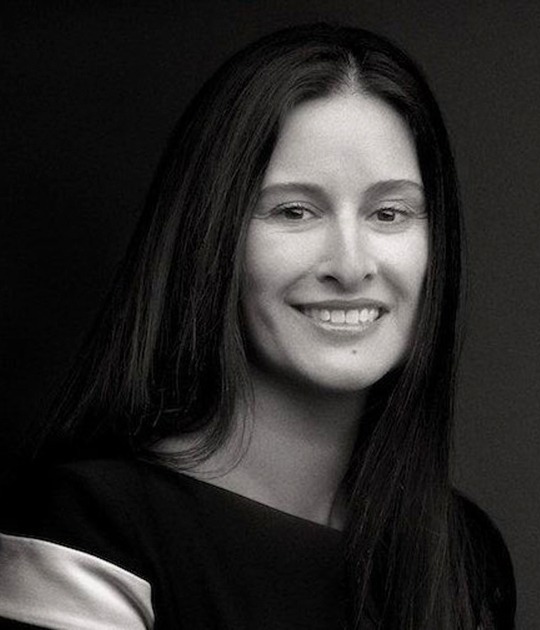For now, Romero has dedicated his project to Wright, one of his lifelong heroes, recreating the Larkin Administration Building, demolished in 1950 after the Larkin Soap Company was dissolved, The Pauson House, that disappeared in a tragic fire after only one year of existence, and never built Trinity Chapel for the University of Oklahoma in Norman. His inspiring work destined to preserve the master´s heritage, has received praise and support from the Frank Lloyd Wright Building Conservancy.
In the near future David Romero expects to expand his project and include other 20th-century reference architects (Mies van der Rohe, Le Corbusier, Alvar Aalto) as well as ancient works.
Description of the project for METALCOUS, by David Romero
The use of architectural visualization techniques by computer is currently in its golden age, and it becomes evident just looking at any architectural magazine where at least half of the images are made by computer.
The technique has improved so much that renders are often indistinguishable from a photograph even for the expert eye. As for instance, the most of the Ikea catalog is created using synthesis images, while nobody (including myself) is able to notice it.
Therefore, it has never been so easy to show the future of architecture and even the most modest practices can present their creations through images of great quality. But what about the past of architecture? The incredible tools we have today are rarely applied to investigating the architecture of the past, and the truth is that there is a huge field to explore: from the temples of Mesopotamia to the missing works of great architects of the twentieth century. Unfortunately, there are few examples of virtual reconstructions with sufficient quality or rigor.
What is this situation due to? This type of virtual or 3D archaeological reconstruction is not supported by an economic engine that would be willing to pay the bills, as it happens in the case of construction and current architecture. And it´s for that reason that we miss the opportunity to contemplate our rich architectural heritage as it really was in its day.
Is it possible to change this situation? It remains to be seen. So far 3D visualization techniques have become so affordable that today you can achieve photorealistic results that previously were only possible through large investments. So, hopefully, realistic recreations of important historical works will be developed little by little in the near future.
My project Hooked on the Past was born with the desire to change that situation and put the focus on the part of our rich architectural heritage that we can not see easily, either because it has been lost, damaged or simply never got to be built.

